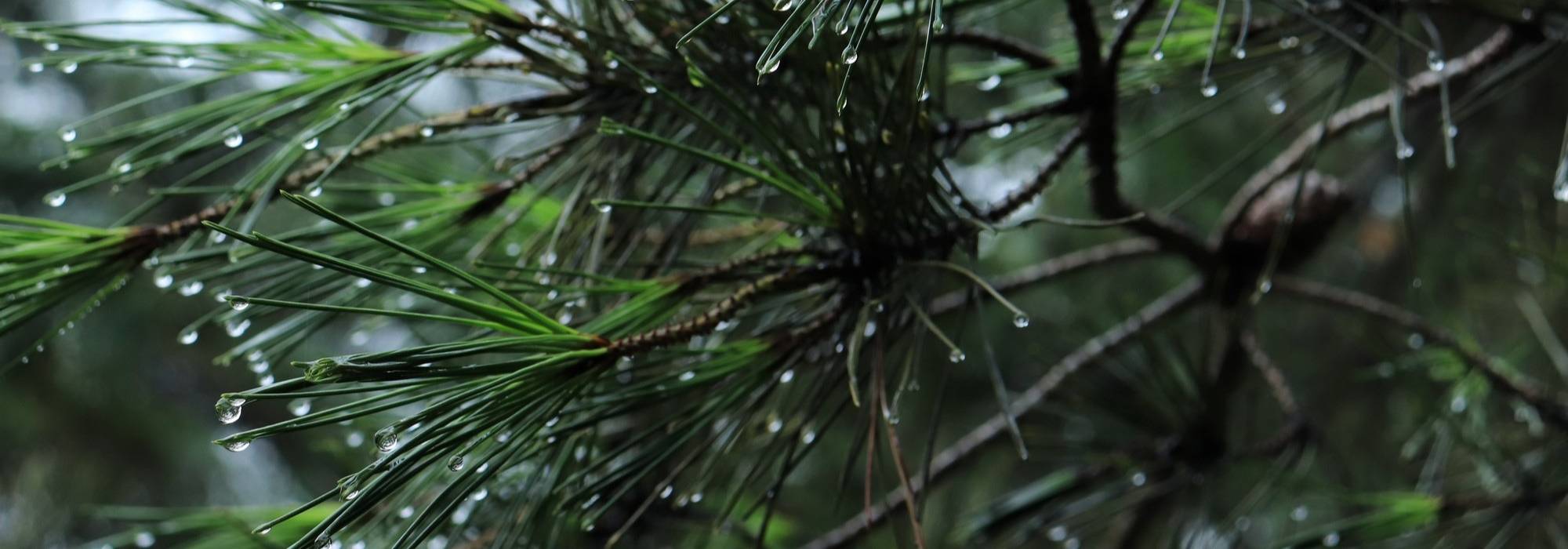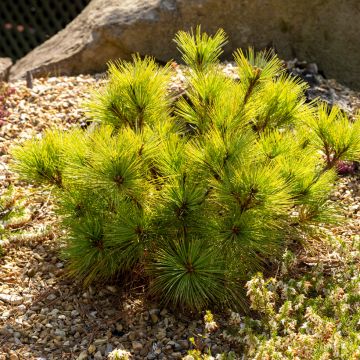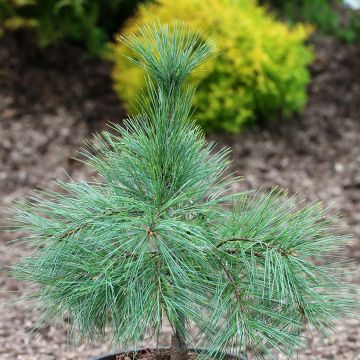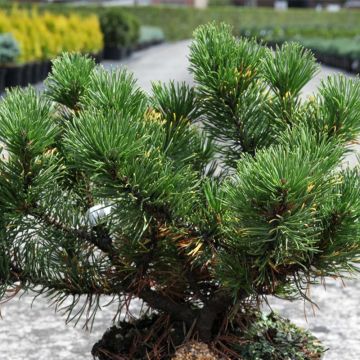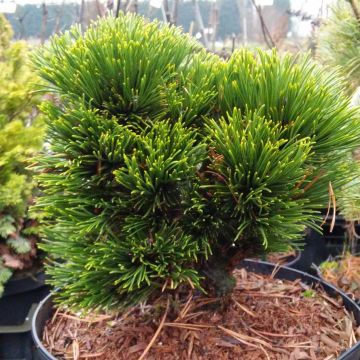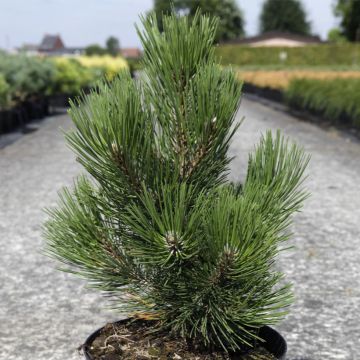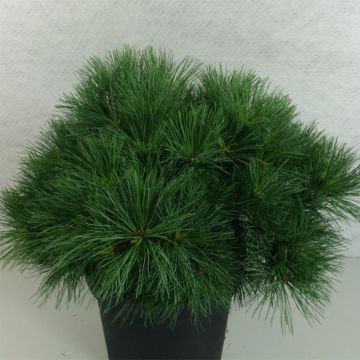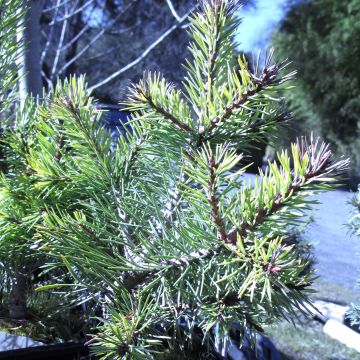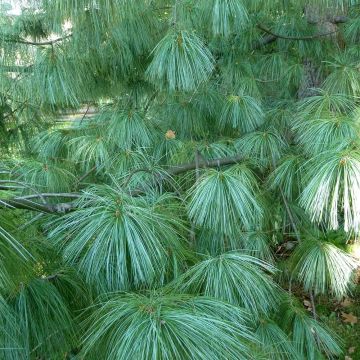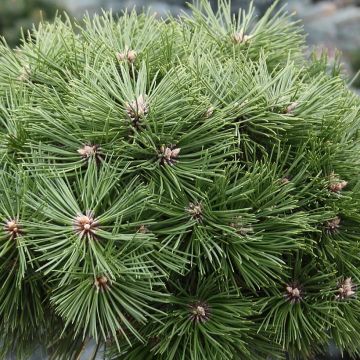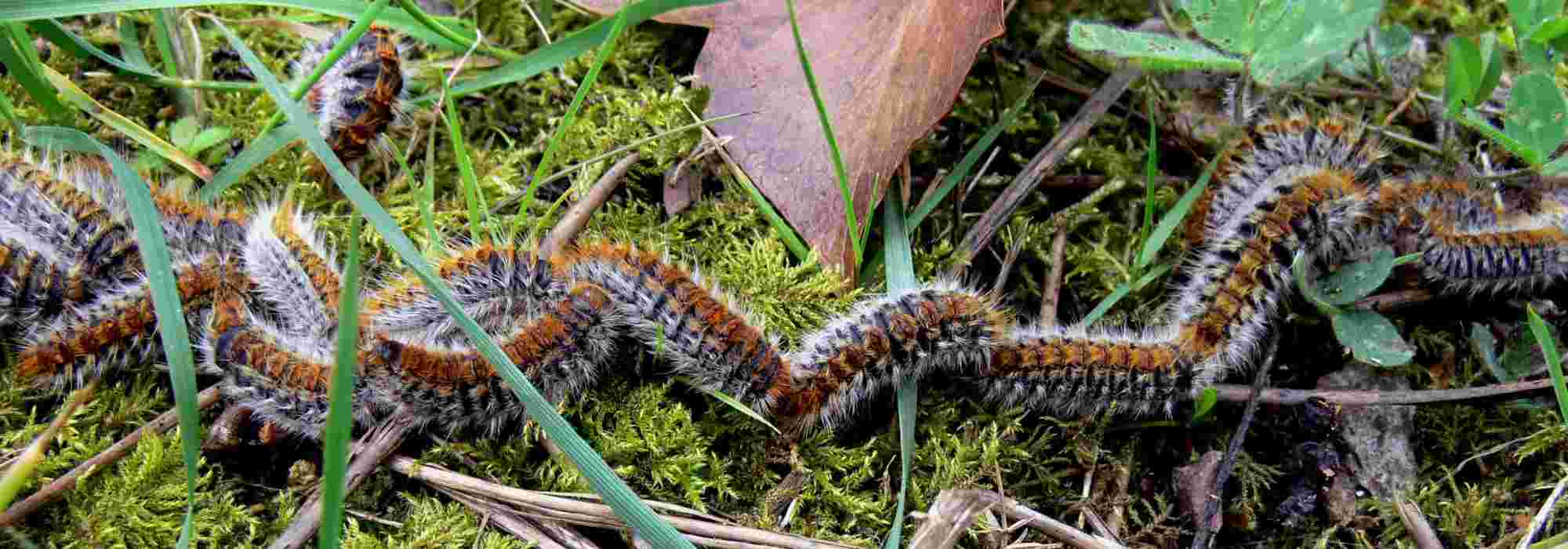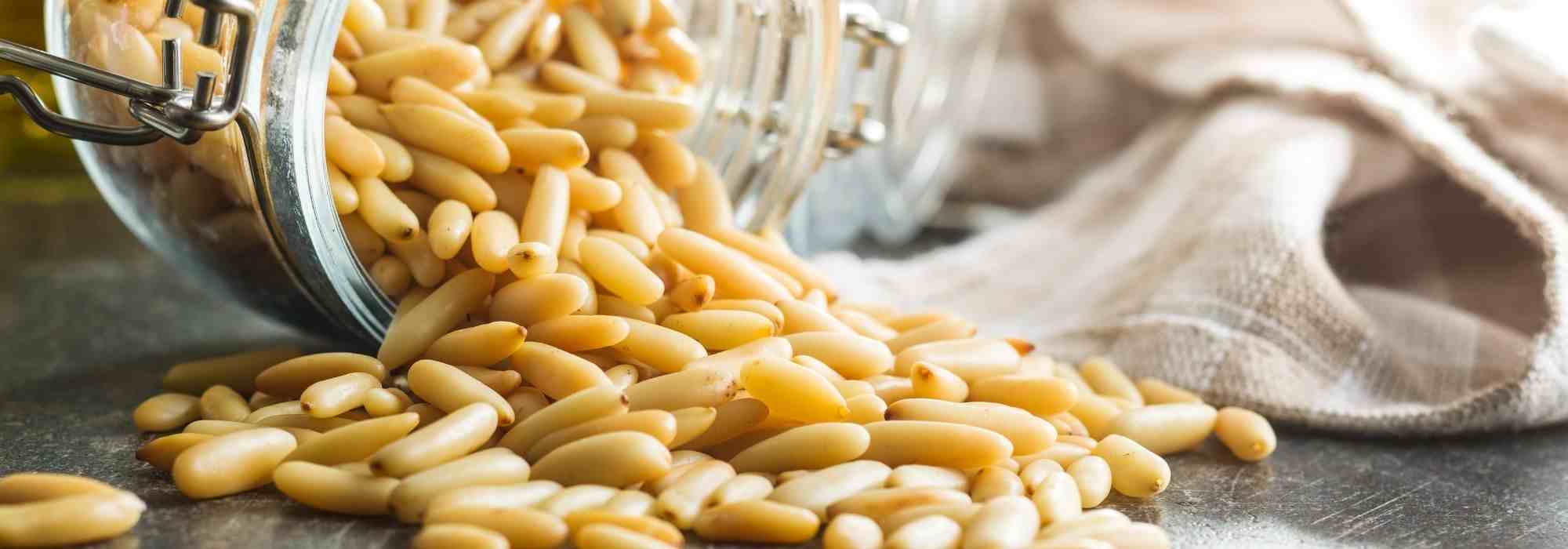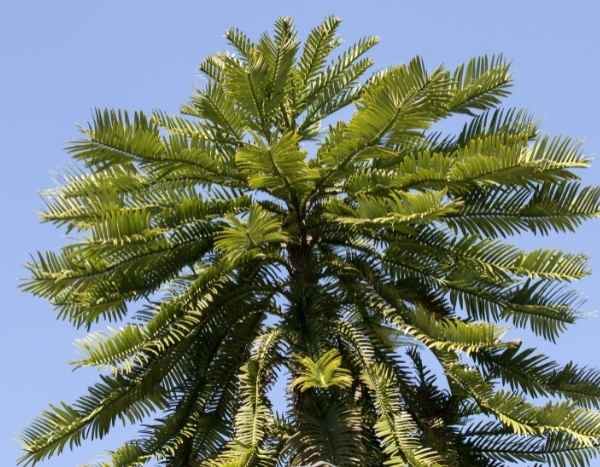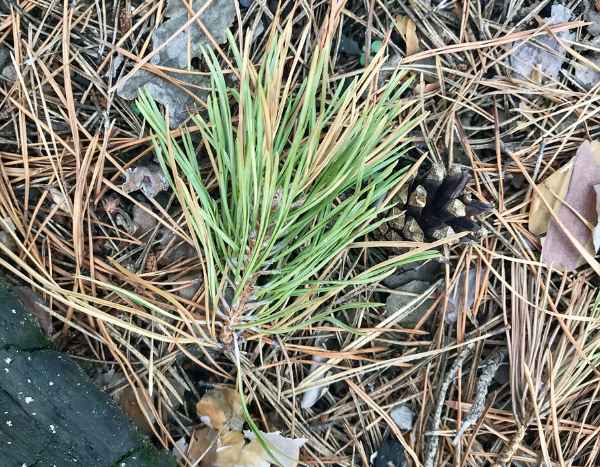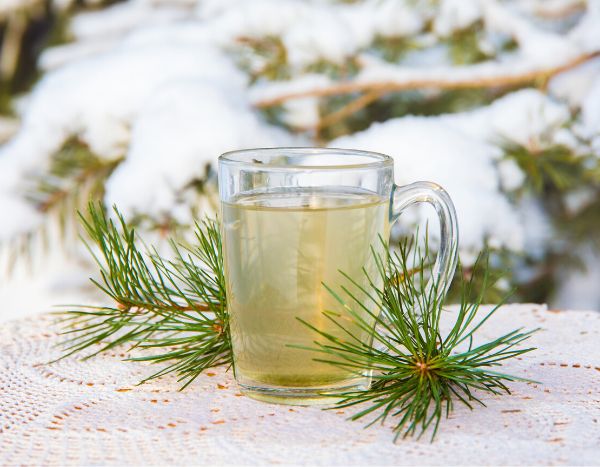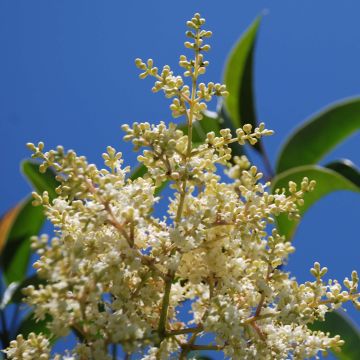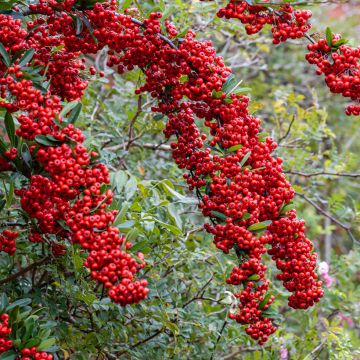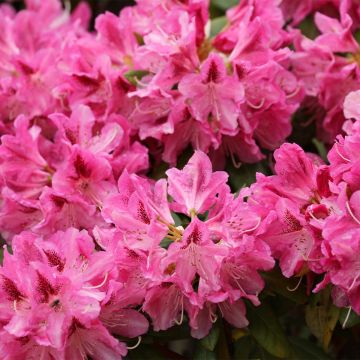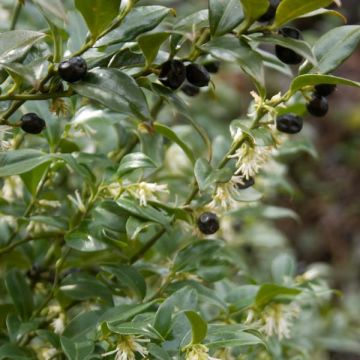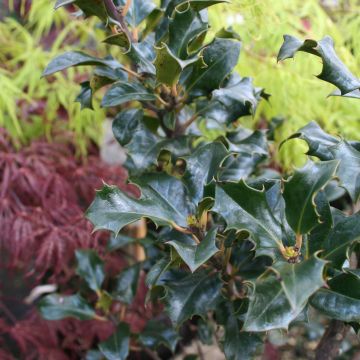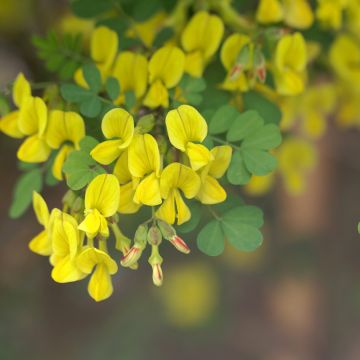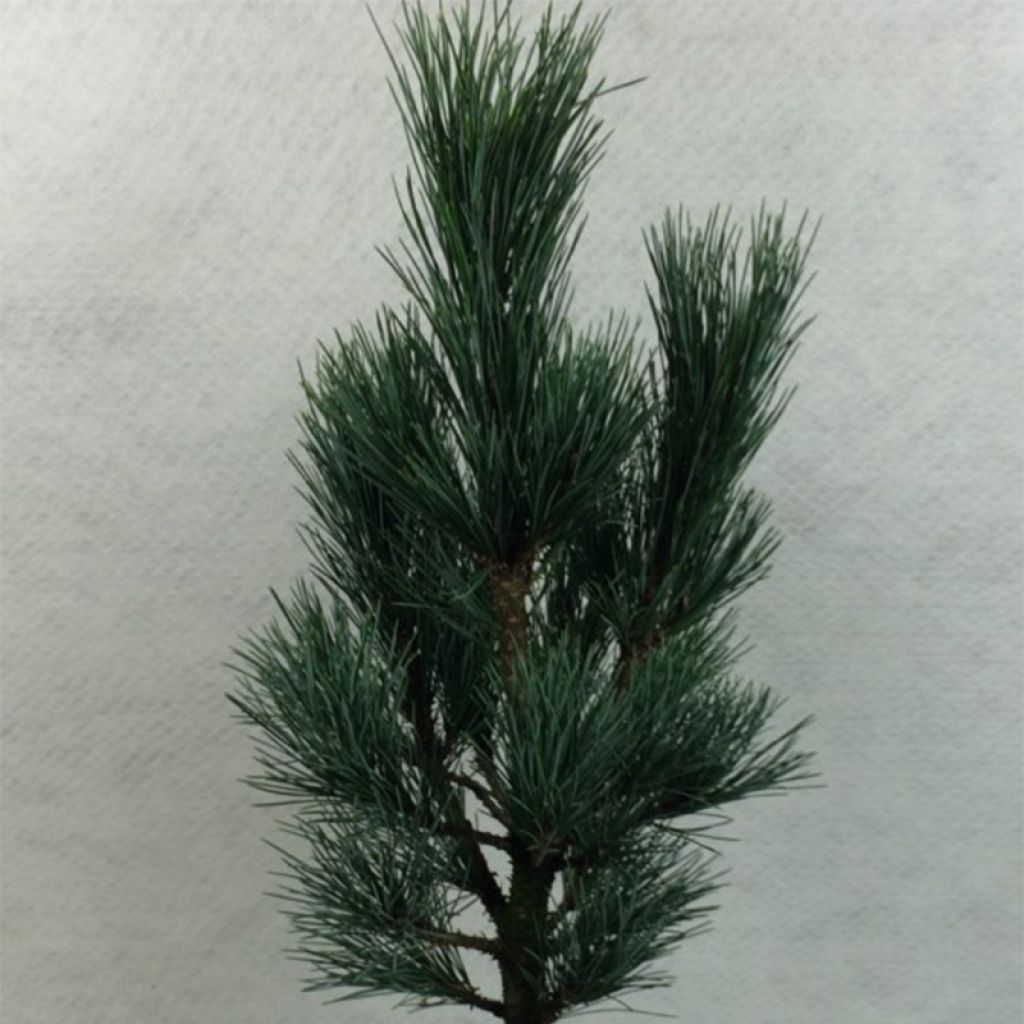

Pinus cembra Compacta Glauca - Arolla Pine
Pinus cembra Compacta Glauca - Arolla Pine
Pinus cembra Compacta Glauca
Swiss Pine, Arolla Pine
Beautiful specimen perfectly packaged.
Didier CORDIER, 28/04/2016
Special offer!
Receive a €20 voucher for any order over €90 (excluding delivery costs, credit notes, and plastic-free options)!
1- Add your favorite plants to your cart.
2- Once you have reached €90, confirm your order (you can even choose the delivery date!).
3- As soon as your order is shipped, you will receive an email containing your voucher code, valid for 3 months (90 days).
Your voucher is unique and can only be used once, for any order with a minimum value of €20, excluding delivery costs.
Can be combined with other current offers, non-divisible and non-refundable.
Home or relay delivery (depending on size and destination)
Schedule delivery date,
and select date in basket
This plant carries a 24 months recovery warranty
More information
We guarantee the quality of our plants for a full growing cycle, and will replace at our expense any plant that fails to recover under normal climatic and planting conditions.
Would this plant suit my garden?
Set up your Plantfit profile →
Description
Pinus cembra 'Compacta Glauca' is a dwarf form of Swiss stone pine, with remarkable foliage. It has a conical (or ovoid), narrow and compact habit, and produces short and ascending branches, densely covered with greenish-blue needles that reveal their pale blue to silvery underside. Due to its moderate growth, it is well suited for medium-sized gardens, in the background of borders, as a hedge or as a specimen plant. It is an undemanding, hardy conifer and does not require pruning. It thrives in moist to dry, well-drained, preferably acidic soil, and in a sunny exposure.
Pinus cembra, also known as Swiss stone pine or Arolla pine, is sometimes called arol, arolla, arve, alpenrose, or cembro. It belongs to the Pinaceae family, native to the high mountains of Europe and Central Asia. It can only grow between 1,700 m to 2,400 m (5577 ft to 7874 ft) above sea level, in climates with long and particularly harsh winters. It is a very hardy species, reaching over 20 m (65.6 ft) in height in Europe and 40 m (131.2 ft ) in Asia, with a narrow, conical habit and fastigiate branches.
The 'Glauca Compacta' variety distinguishes itself from the wild species by its reduced size, very compact habit, and magnificent, particularly dense foliage. Its growth is slow, about 8 cm (3.1 in) per year. A 10-year-old specimen will not exceed 1 m (3.3 ft) in height with a spread of 50 cm (19.7 in) at the base. Eventually, after many long years, it will reach a height of 4 m (13.1 ft). Its short, ascending and tightly packed branches are covered with fine needles, measuring 4 cm to 8 cm (1.6 in to 3.1 in) in length, grouped in fives and arranged in brushes. They are sprinkled with white stomata on all three sides, giving the foliage a greenish-blue colour with blue-silvery reflections on the reverse side.
'Compacta Glauca' will suit a medium-sized garden, as a specimen or in the background of borders. This variety can also be used in mixed or evergreen hedges. It works wonders in a Japanese garden, and goes well with large stones, the geometric lines of pools, and masonry works. It can be planted with complementary grasses or with dwarf conifers with prostrate habit (Juniperus horizontalis 'Blue Chip'), globose habit (Picea abies 'Little Gem'), or columnar habit (Juniperus communis 'Sentinel'). The structural qualities of conifers naturally shine in a contemporary garden, which prefers the aesthetics of forms, silhouettes, and textures over the fleeting appearance of flowers. These plants have a reassuring permanence that provides lasting structure to a flower bed. They can be used to mark pathways and border terraces, easily replacing trimmed boxwood or holly. The key is to play with volumes and colours.
Pinus cembra Compacta Glauca - Arolla Pine in pictures
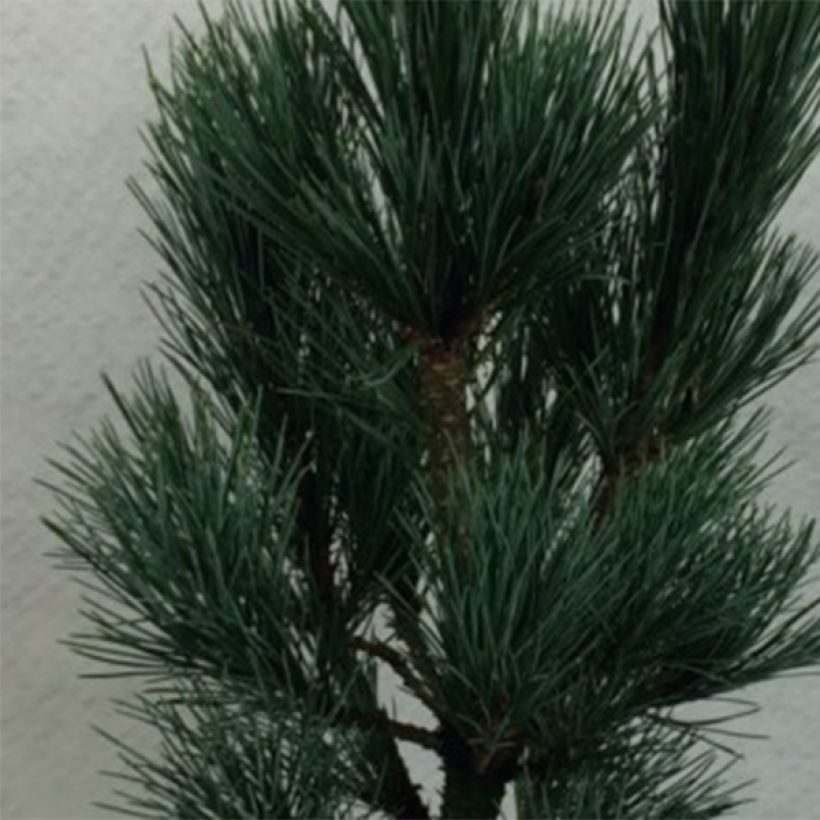

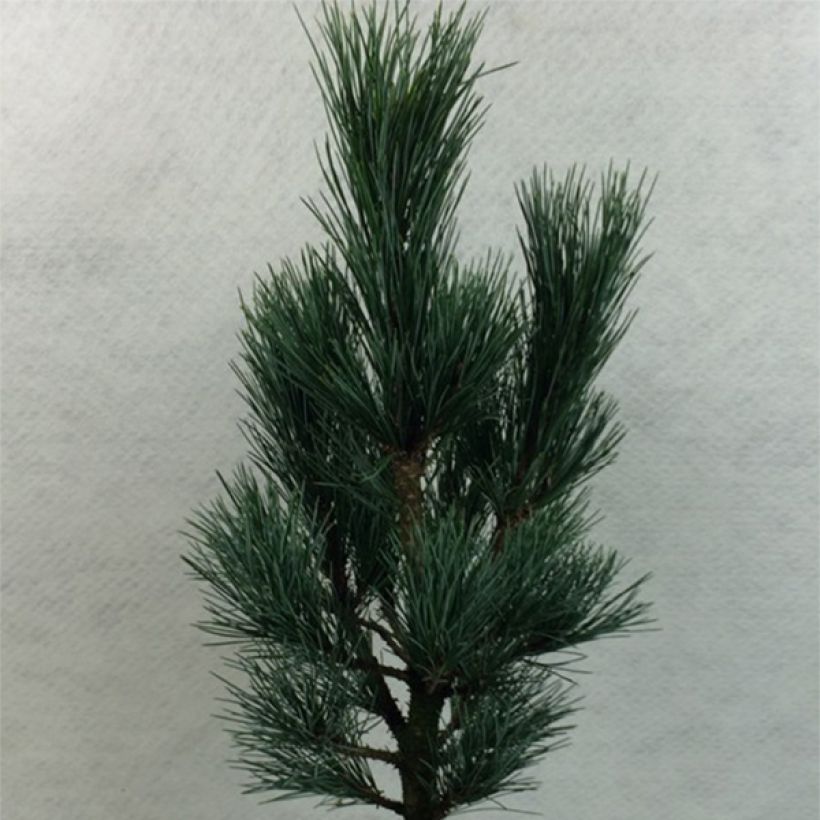

Plant habit
Foliage
Botanical data
Pinus
cembra
Compacta Glauca
Pinaceae
Swiss Pine, Arolla Pine
Cultivar or hybrid
Other Pinus - Pine
View all →Planting and care
Plant from September to November and from February to June in well-drained, moist to dry, preferably fertile, slightly acidic to very acidic soil. Sandy, humus-rich, or loamy soil will be perfect. Choose a sunny spot or, at most, a partially shaded one. Soak the root balls well before planting. Add organic matter at planting and water generously in the first years, and during prolonged drought. Apply a special conifer fertiliser every year in April and weed the soil in summer. This very hardy conifer (up to -20° C (-4° F) at least) can tolerate temporary drought once well established. Pruning is not necessary.
Planting period
Intended location
Care
Planting & care advice
-
, onOrder confirmed
Reply from on Promesse de fleurs
Similar products
Haven't found what you were looking for?
Hardiness is the lowest winter temperature a plant can endure without suffering serious damage or even dying. However, hardiness is affected by location (a sheltered area, such as a patio), protection (winter cover) and soil type (hardiness is improved by well-drained soil).

Photo Sharing Terms & Conditions
In order to encourage gardeners to interact and share their experiences, Promesse de fleurs offers various media enabling content to be uploaded onto its Site - in particular via the ‘Photo sharing’ module.
The User agrees to refrain from:
- Posting any content that is illegal, prejudicial, insulting, racist, inciteful to hatred, revisionist, contrary to public decency, that infringes on privacy or on the privacy rights of third parties, in particular the publicity rights of persons and goods, intellectual property rights, or the right to privacy.
- Submitting content on behalf of a third party;
- Impersonate the identity of a third party and/or publish any personal information about a third party;
In general, the User undertakes to refrain from any unethical behaviour.
All Content (in particular text, comments, files, images, photos, videos, creative works, etc.), which may be subject to property or intellectual property rights, image or other private rights, shall remain the property of the User, subject to the limited rights granted by the terms of the licence granted by Promesse de fleurs as stated below. Users are at liberty to publish or not to publish such Content on the Site, notably via the ‘Photo Sharing’ facility, and accept that this Content shall be made public and freely accessible, notably on the Internet.
Users further acknowledge, undertake to have ,and guarantee that they hold all necessary rights and permissions to publish such material on the Site, in particular with regard to the legislation in force pertaining to any privacy, property, intellectual property, image, or contractual rights, or rights of any other nature. By publishing such Content on the Site, Users acknowledge accepting full liability as publishers of the Content within the meaning of the law, and grant Promesse de fleurs, free of charge, an inclusive, worldwide licence for the said Content for the entire duration of its publication, including all reproduction, representation, up/downloading, displaying, performing, transmission, and storage rights.
Users also grant permission for their name to be linked to the Content and accept that this link may not always be made available.
By engaging in posting material, Users consent to their Content becoming automatically accessible on the Internet, in particular on other sites and/or blogs and/or web pages of the Promesse de fleurs site, including in particular social pages and the Promesse de fleurs catalogue.
Users may secure the removal of entrusted content free of charge by issuing a simple request via our contact form.
The flowering period indicated on our website applies to countries and regions located in USDA zone 8 (France, the United Kingdom, Ireland, the Netherlands, etc.)
It will vary according to where you live:
- In zones 9 to 10 (Italy, Spain, Greece, etc.), flowering will occur about 2 to 4 weeks earlier.
- In zones 6 to 7 (Germany, Poland, Slovenia, and lower mountainous regions), flowering will be delayed by 2 to 3 weeks.
- In zone 5 (Central Europe, Scandinavia), blooming will be delayed by 3 to 5 weeks.
In temperate climates, pruning of spring-flowering shrubs (forsythia, spireas, etc.) should be done just after flowering.
Pruning of summer-flowering shrubs (Indian Lilac, Perovskia, etc.) can be done in winter or spring.
In cold regions as well as with frost-sensitive plants, avoid pruning too early when severe frosts may still occur.
The planting period indicated on our website applies to countries and regions located in USDA zone 8 (France, United Kingdom, Ireland, Netherlands).
It will vary according to where you live:
- In Mediterranean zones (Marseille, Madrid, Milan, etc.), autumn and winter are the best planting periods.
- In continental zones (Strasbourg, Munich, Vienna, etc.), delay planting by 2 to 3 weeks in spring and bring it forward by 2 to 4 weeks in autumn.
- In mountainous regions (the Alps, Pyrenees, Carpathians, etc.), it is best to plant in late spring (May-June) or late summer (August-September).
The harvesting period indicated on our website applies to countries and regions in USDA zone 8 (France, England, Ireland, the Netherlands).
In colder areas (Scandinavia, Poland, Austria...) fruit and vegetable harvests are likely to be delayed by 3-4 weeks.
In warmer areas (Italy, Spain, Greece, etc.), harvesting will probably take place earlier, depending on weather conditions.
The sowing periods indicated on our website apply to countries and regions within USDA Zone 8 (France, UK, Ireland, Netherlands).
In colder areas (Scandinavia, Poland, Austria...), delay any outdoor sowing by 3-4 weeks, or sow under glass.
In warmer climes (Italy, Spain, Greece, etc.), bring outdoor sowing forward by a few weeks.






























